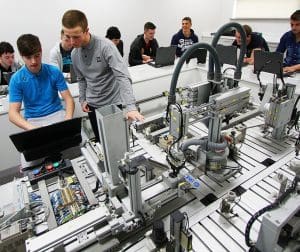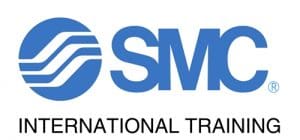
Since the beginnings of industry, the automation of manufacturing and production processes has been constantly evolving. This evolution is being possible due to the integration of classic technologies like mechanics and electricity with other more modern ones such as electronics, computing, communications, etc.
This integration of technologies is well represented by using the “Automation Pyramid” graphic, which includes the five technological levels which can be considered in an industrial environment. The technologies interrelate, both within each level and between the different levels by using industrial communications. The automation pyramid is evolving at the same time as industry, so lines between levels are progressively disappearing these levels are merging.
The rapid development in production processes, orientated to the increase of productivity and quality of the products, has given rise to automated tasks that were previously carried out manually. This fact, together with the integration of technologies found in processes, creates a demand for higher qualification of technicians and engineers required by industry.
The evolution of automated industry and technological integration are two phenomena which have forced rethinking the type of skills required by the industry workforce. Tasks which were once manually performed, are now automated and companies have gone from asking for operators/workers to demanding qualified technical personnel.

The multi-technological environment means that specialization (mechanics, electronics, etc.) are no longer sufficient and the technicians must develop a series of professional abilities to interact with technologies and to be able to undertake their work efficiently.
Qualified technical personnel are a fundamental component in current productive systems. They are capable of anticipating eventualities that no software is capable of emulating. They improvise, intercept problems and make things possible.
When we are in an educational environment it is important to understand the difference between the “know” and the “know how to”. When we talk about “know” we refer to acquire knowledge, in automation industry, knowledge of the fundamentals of the different technologies.
To be trained in something, you need to know the theoretical basis first, but this is not enough to become a qualified personnel. To be qualified, we need to talk about the “know how to”, which means developing skills. Once we “know how to” in any field we will be able to understand and solve related problems.
An investigation carried out by National Training Laboratories (Bethel, Maine) reveals the firm grasp of concepts taking place when the learning process is implemented using training /hands on equipment.
The result of this investigation is the “Learning Pyramid” which says that one of the best learning methodology is “practice by doing”.
SMC International Training emerges from the heart of SMC with the clear commitment of offering training solutions adapted to the needs of industry, orientated to the development of the professional expertise that is now required for the all sectors of industry.
SMC International Training is exhibiting at Worlddidac India 2015, Bengaluru. You can find us at Booth H5, Hall no.2.
About the Author

Mr. Mariano Carreras, SMC International Training General Manager.
One of the founders of SMC International Training in 2000, the didactic division of SMC Corporation. SMC is the world leader for innovation of industrial automation components. SMC International Training takes the INDUSTRY as the reference to offer training equipment for industrial automation.


2 Responses
Hey very interesting blog!
Thank you!